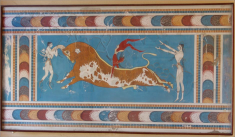Speaker
Description
Approximately 1 $\mu$s after the Big Bang, the universe was in the state of a Quark-Gluon Plasma (QGP), an ultra hot and dense state of matter consisting of quarks and gluons. With the Large Hadron Collider (LHC) at CERN, in Switzerland, the properties of the QGP are studied by recreating this state of matter in collisions of lead ions. Studies of collisions of protons with protons or lead ions have shown that these smaller systems can also possess features of collectivity reminiscent of a QGP. The charged-particle multiplicity is one of the most fundamental measurements and provides insights into the mechanisms of particle production.
We present results for charged-particle multiplicity distributions in pp collisions over a wide kinematic range, namely ($-3.4 < \eta < 5.0$), and new studies for p-Pb collisions. The data used in this work were obtained using the Forward Multiplicity Detector (FMD) and the Silicon Pixel Detector (SPD) of ALICE (A Large Ion Collider Experiment) at the LHC. The results are compared to different models in order to assess which scenario better describes the data and whether there are signs of QGP.
